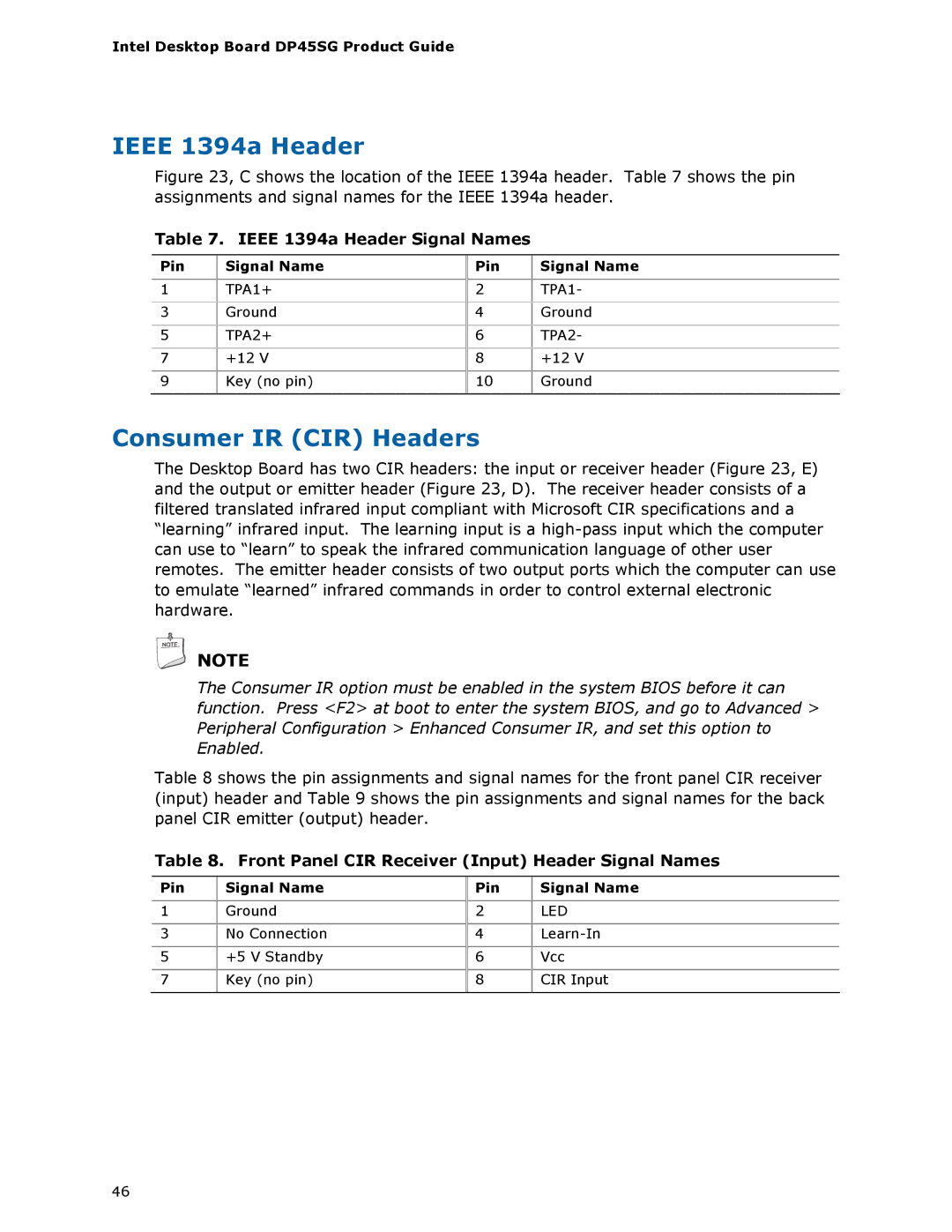
Intel Desktop Board DP45SG Product Guide
IEEE 1394a Header
Figure 23, C shows the location of the IEEE 1394a header. Table 7 shows the pin assignments and signal names for the IEEE 1394a header.
Table 7. IEEE 1394a Header Signal Names
Pin | Signal Name |
|
|
1 | TPA1+ |
3 | Ground |
|
|
5 | TPA2+ |
|
|
7 | +12 V |
|
|
9 | Key (no pin) |
|
|
Pin | Signal Name |
|
|
2 | TPA1- |
4 | Ground |
|
|
6 | TPA2- |
|
|
8+12 V
10Ground
Consumer IR (CIR) Headers
The Desktop Board has two CIR headers: the input or receiver header (Figure 23, E) and the output or emitter header (Figure 23, D). The receiver header consists of a filtered translated infrared input compliant with Microsoft CIR specifications and a “learning” infrared input. The learning input is a
![]() NOTE
NOTE
The Consumer IR option must be enabled in the system BIOS before it can function. Press <F2> at boot to enter the system BIOS, and go to Advanced > Peripheral Configuration > Enhanced Consumer IR, and set this option to Enabled.
Table 8 shows the pin assignments and signal names for the front panel CIR receiver (input) header and Table 9 shows the pin assignments and signal names for the back panel CIR emitter (output) header.
Table 8. Front Panel CIR Receiver (Input) Header Signal Names
Pin | Signal Name |
|
|
1 | Ground |
3No Connection
5+5 V Standby
7Key (no pin)
Pin | Signal Name |
|
|
2 | LED |
|
|
4 | |
|
|
6 | Vcc |
|
|
8 | CIR Input |
|
|
46
